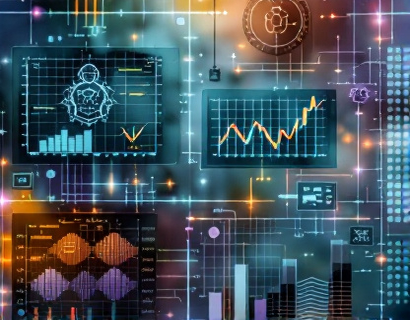Real-Time Blockchain Notifications: Empowering Cryptocurrency Investors with Future Block Alerts
In the rapidly evolving world of cryptocurrency, staying ahead of the curve is crucial for any investor or enthusiast. The decentralized nature of blockchain technology brings both opportunities and challenges, particularly in the realm of timing and information. Traditional methods of monitoring blockchain activity can be cumbersome and often result in delayed decisions, which can be detrimental in a market that moves at the speed of light. This is where real-time blockchain notifications come into play, offering a revolutionary way to stay informed and make strategic investment decisions.
Real-time blockchain notifications are alerts that inform users about specific blockchain events as they occur, such as the mining of future blocks across multiple chains. These notifications are not just about being informed; they are about having the edge that can mean the difference between profit and loss. By leveraging advanced technology, it is now possible to receive instant notifications when certain blocks are mined, allowing investors to react swiftly to market changes.
Understanding Blockchain Block Minings
To fully appreciate the value of real-time blockchain notifications, it's essential to understand the concept of block minings. In blockchain, a block is a record of recent transactions, and mining is the process by which these blocks are added to the blockchain. Miners solve complex mathematical problems to validate transactions and create new blocks, a process that requires significant computational power and time.
Each blockchain has its own protocol and timing for block minings. For instance, Bitcoin, the largest and most well-known blockchain, averages a new block every 10 minutes, while Ethereum, another major player, has a more variable block time depending on network conditions. Understanding these differences is crucial for investors who want to time their trades based on block confirmations.
The Need for Real-Time Alerts
The traditional method of checking blockchain status manually is inefficient and prone to human error. Investors often miss critical events such as block confirmations, transaction validations, and network upgrades. Real-time notifications bridge this gap by providing immediate alerts, ensuring that users are always in the loop.
These alerts can be customized to notify users about specific events, such as the mining of a particular block height, the addition of a new block, or the occurrence of a hard fork. By setting up these alerts, investors can monitor multiple blockchains simultaneously, gaining a comprehensive view of the cryptocurrency landscape.
Benefits of Real-Time Blockchain Notifications
1. Timely Decision-Making: Real-time notifications enable investors to react quickly to market events. Whether it's a sudden price surge or a network issue, having immediate access to information allows for timely adjustments to investment strategies.
2. Enhanced Security: Being alerted to network upgrades or security updates can help investors protect their assets. For example, knowing about a planned hard fork can prevent losses from holding tokens that may be invalidated.
3. Improved Portfolio Management: With real-time data, investors can better manage their portfolios by monitoring the status of transactions and block confirmations. This is particularly useful for traders who rely on block time to execute strategies.
4. Competitive Advantage: In a market where information is power, real-time notifications provide a competitive edge. Investors who receive alerts first can capitalize on opportunities before the rest of the market.
How Real-Time Notifications Work
Real-time blockchain notifications are powered by sophisticated algorithms and APIs that continuously monitor blockchain networks. Here’s a simplified overview of how the technology works:
1. Data Collection: Specialized servers or nodes collect data from multiple blockchain networks. These nodes are distributed globally to ensure high availability and reliability.
2. Event Detection: The collected data is processed to detect specific events, such as block minings, transaction confirmations, and network changes. Advanced machine learning algorithms can even predict potential events based on historical data.
3. Alert Generation: Once an event is detected, an alert is generated. These alerts can be customized to include specific criteria, such as block height, chain name, or transaction details.
4. Notification Delivery: The alerts are then delivered to users via their preferred method, whether it's email, SMS, push notifications, or a dedicated app interface. The delivery method can be tailored to ensure the alert is received promptly.
Customization and Flexibility
One of the key advantages of real-time blockchain notifications is their customization options. Users can tailor alerts to fit their specific needs and investment strategies. Here are some ways users can customize their notifications:
- Select Specific Blockchains: Users can choose to receive alerts for particular blockchains, such as Bitcoin, Ethereum, Binance Coin, or lesser-known altcoins.
- Define Event Types: Alerts can be set for specific types of events, such as block minings, transaction confirmations, smart contract deployments, or network upgrades.
- Set Custom Criteria: Users can define custom criteria for alerts, such as monitoring a specific block height, a particular wallet address, or a certain transaction amount.
- Choose Notification Channels: Users can select how they receive alerts, including email, SMS, push notifications, or through a mobile app.
This level of customization ensures that users only receive relevant alerts, reducing noise and increasing the actionability of the information.
Integration with Trading Platforms
Real-time blockchain notifications can be seamlessly integrated with popular trading platforms and wallets, enhancing the overall trading experience. For instance, a user can set up an alert to notify them when a specific block is mined on Ethereum, and simultaneously, the trading platform can automatically execute a trade based on predefined conditions.
This integration not only saves time but also reduces the risk of human error. Traders can focus on higher-level decision-making while the system handles the real-time monitoring and alerting.
Challenges and Considerations
While real-time blockchain notifications offer significant benefits, there are also challenges and considerations to keep in mind:
1. Data Accuracy: Ensuring the accuracy of the data is crucial. Any errors in data collection or event detection can lead to false alerts, which can be misleading and costly.
2. Network Latency: Despite the real-time nature of the alerts, there can still be slight delays due to network latency. Investors should be aware of these potential delays when making high-frequency trades.
3. Privacy Concerns: Handling large volumes of blockchain data raises privacy concerns. It's important for notification services to adhere to strict data protection standards and comply with regulations such as GDPR.
4. Cost: Depending on the service provider, there may be costs associated with real-time notifications. Users should evaluate the cost-benefit ratio to ensure the service adds value to their investment strategy.
Future Developments
The field of real-time blockchain notifications is rapidly evolving, with several exciting developments on the horizon:
1. Advanced Predictive Analytics: Incorporating machine learning and AI to predict future block minings and market movements based on historical data and real-time alerts.
2. Cross-Chain Alerts: Developing systems that can monitor multiple blockchains simultaneously, providing a unified view of the entire cryptocurrency ecosystem.
3. Enhanced User Interfaces: Creating more intuitive and user-friendly interfaces for receiving and managing alerts, including voice-activated notifications for hands-free trading.
4. Regulatory Compliance: As the cryptocurrency market matures, real-time notification services will need to adapt to new regulations, ensuring compliance while maintaining functionality.
Conclusion
Real-time blockchain notifications represent a significant advancement in the cryptocurrency investment landscape. By providing instant alerts on future block minings across multiple chains, these services empower investors to make informed and timely decisions. The ability to stay ahead of market movements and network events can be the difference between success and failure in the dynamic world of digital currencies.
As the technology continues to evolve, the potential for real-time notifications to transform the way we interact with blockchain networks is immense. Whether you are a seasoned trader or a curious enthusiast, embracing real-time blockchain notifications can enhance your investment strategy and keep you at the forefront of the cryptocurrency revolution.











































